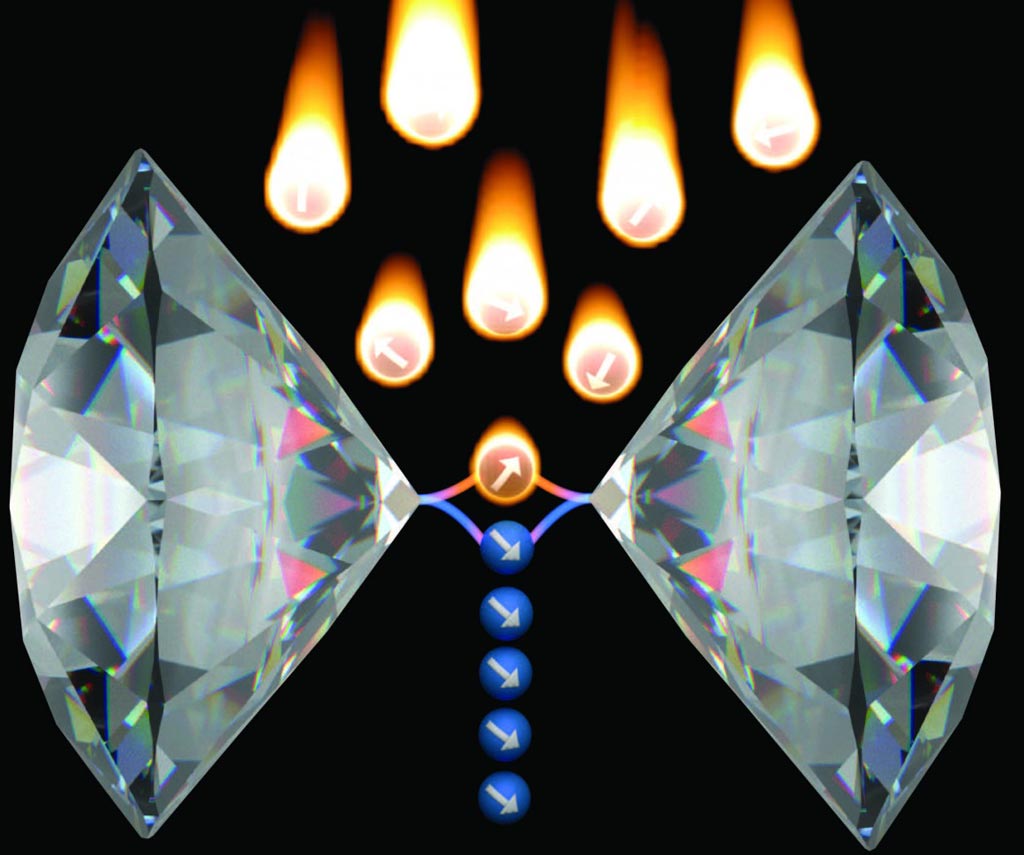Harnessing Quantum Hyperpolarization Increases MRI Sensitivity
By MedImaging International staff writers
Posted on 10 Apr 2018
Creating specific defects in diamond crystals could increase the magnetic field detected by magnetic resonance imaging (MRI) devices.Posted on 10 Apr 2018
Researchers at the University of Melbourne (UNIMELB; Parkville, Australia), the Melbourne Centre for Nanofabrication (Clayton, Australia), and other institutions used a cross-relaxation induced polarization protocol to induce hyperpolarization of molecular nuclear spins in modified diamonds with nitrogen vacancy qubits. Quantum mechanical interaction between the target and quantum probes transfers the polarization from the diamond to the agent, which can then be delivered to the patient prior to their MRI, since the agent retains polarization long enough to travel to a tumor site, making it easier to image.

Image: A representation of quantum hyperpolarization (Photo courtesy of David Broadway, UNIMELB).
The researchers successfully demonstrated quantum probe hyperpolarization of external molecular nuclear spins to ~50% under ambient conditions, with a single qubit increasing the polarization of around 106 nuclear spins by six orders of magnitude over the thermal background. The results were verified against a theoretical treatment, which also describes how the system could be scaled up to a universal quantum hyperpolarization platform for macroscopic samples, and its potential to extend into other scientific areas. The study was published on March 28, 2018, in Nature Communications.
“We can think of the atom's nuclei like a compass needle that produces a magnetic field that depends on its orientation. When there are several compass needles pointing in different directions, the resulting field tends to average to zero,” said lead author UNIMELB PhD candidate David Broadway. “But when the compasses point all in the same direction, the contributions to the field from each compass needle will add up to something measurable. So having the nuclei all lined up makes the magnetic field stronger and therefore the MRI reading it can pick up more detail.”
“To achieve the same level of polarization with a conventional approach, we'd need to increase the magnetic field by a factor of about 100,000 times, and you're only going to find fields like that in a neutron star,” said senior author Professor Lloyd Hollenberg, PhD, of UNIMELB. “Superconducting magnets that produce these fields are also the reason MRI scanners cost millions of dollars, as the magnets need to be kept at cryogenic temperatures.”
The hyperpolarized spin state exists at very low spin temperature that are not in a thermal equilibrium with the temperature of the tissue, which leads to high magnetization of the spin ensemble, resulting in very high nuclear magnetic resonance signal intensity. The hyperpolarized spin state eventually returns to the thermal equilibrium temperature by depolarization.
Related Links:
University of Melbourne
Melbourne Centre for Nanofabrication














